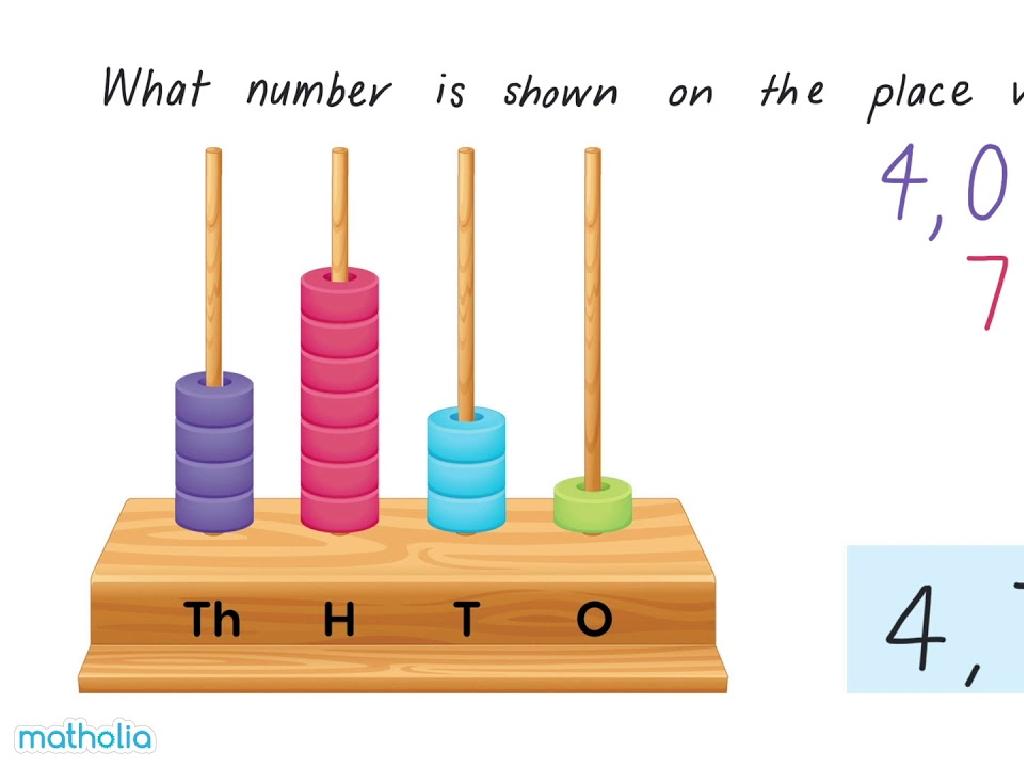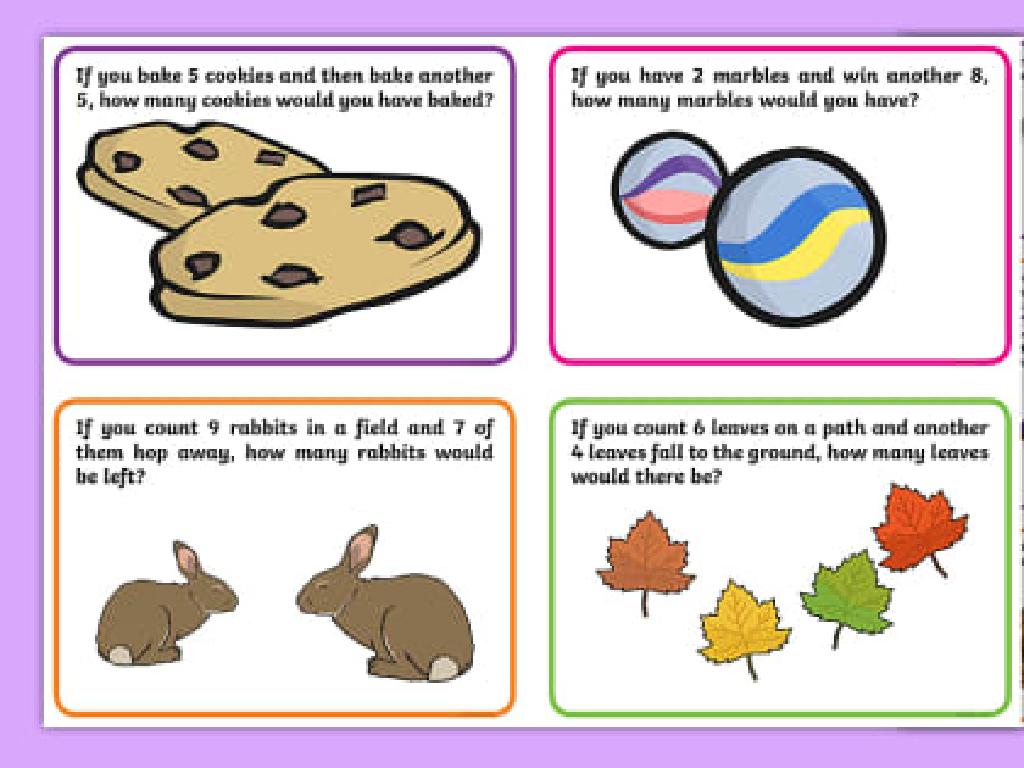Identify Countries Of Europe: Review
Subject: Social studies
Grade: Sixth grade
Topic: Europe: Geography
Please LOG IN to download the presentation. Access is available to registered users only.
View More Content
Exploring the Countries of Europe
– Europe’s geographical overview
– Europe is a continent with diverse landscapes and climates.
– Europe’s global influence
– Europe has a significant impact on global politics, economy, and culture.
– Recap of European geography
– Review the countries, capitals, and major landmarks we’ve studied.
– Engage with a map activity
– Locate countries on a map and discuss their features.
|
This slide is designed to review the geography of Europe and its importance in the world. Begin with a brief overview of Europe’s diverse geography, including its various climates and landscapes. Discuss how Europe plays a crucial role in global affairs, influencing politics, economics, and culture. Recap the key points from previous lessons about European countries, their capitals, and significant landmarks. Conclude with an interactive map activity where students will identify countries on a map, reinforcing their knowledge of European geography. This activity will also serve as a hands-on way to engage students and assess their understanding of the material covered so far.
Exploring Europe’s Geography
– Geography: Earth’s landscapes & environments
– Study of places, people, and their environment interactions
– Europe’s diverse geography
– Mountains, plains, rivers, and different climates across Europe
– Significance of learning country locations
– Knowing geography helps understand global connections and history
– Impact on culture and interaction
– Geography shapes cultural identities and how countries relate
|
This slide introduces the concept of geography and its importance, focusing on Europe. Geography is not just about memorizing places on a map; it’s about understanding the complex relationships between people and the environments they live in. Europe’s varied landscapes, from the Alps to the plains of Hungary, influence the climate, culture, and economy of the region. By learning about the locations of different countries, students can gain insights into historical events, cultural exchanges, and current affairs. This knowledge is crucial for understanding how European countries interact with each other and the rest of the world. Encourage students to think about how geography can affect their daily lives and the connections between different regions.
Exploring the Countries of Europe
– Europe consists of 44 countries
– Identify large countries on the map
– Look for Russia, Germany, France on the map
– Examples: Russia, Germany, France
– Russia is the largest by area, Germany is populous, France is famous for its culture
– United Kingdom’s geography
– UK is an island nation with distinct countries
|
This slide aims to review the countries of Europe with a focus on some of the largest by size and significance. Start by discussing the total number of countries in Europe. Then, using a map, help students locate and identify larger countries such as Russia, which is the largest country in Europe and the world by area; Germany, known for its significant population and economic influence; France, renowned for its cultural landmarks and history; and the United Kingdom, which is unique as it comprises four distinct countries: England, Scotland, Wales, and Northern Ireland. Encourage students to recognize these countries on the map and discuss their relative sizes and locations. This activity will help reinforce their geographical knowledge and understanding of Europe’s diversity.
Exploring the Regions of Europe
– Europe’s diverse regions
– Northern, Southern, Eastern, Western Europe
– Unique regional characteristics
– Distinct cultures, languages, histories
– Examples from each region
– Norway (North), Italy (South), Russia (East), France (West)
– Cultural significance
|
This slide aims to review the geographical division of Europe into four main regions and to highlight the distinct cultural and historical identities of each. Emphasize that despite being part of one continent, the regions of Europe are quite diverse. For homework, students should identify one country from each region and research its unique characteristics. This will help them appreciate the variety within Europe and understand how geography can influence culture and history. In the next class, students can share interesting facts about their chosen countries, fostering a collaborative learning environment.
Europe’s Physical Geography
– Europe’s diverse terrain
– Key features: Alps, Danube, Great Plain
– The Alps are Europe’s highest mountains; the Danube is one of its longest rivers; the Great European Plain is one of its largest plains.
– Impact on human settlement
– People often settle near water sources and in areas with fertile land for agriculture.
– Influence on lifestyle and culture
– Terrain influences transportation, trade routes, and cultural exchanges.
|
This slide aims to review the various physical features of Europe and their impact on human activity. Emphasize the diversity of Europe’s geography, including its mountains, rivers, and plains. Highlight the Alps as a significant mountain range, the Danube River as a crucial waterway, and the Great European Plain as a key agricultural area. Discuss how these features have influenced where people choose to live, with a tendency to settle in areas that offer water, food, and transportation. Additionally, explore how geography has shaped the lifestyles, cultures, and interactions of European societies. Encourage students to think about how living near a mountain range or river might differ from residing on a plain.
Climate Zones of Europe
– Europe’s diverse climates
– From sunny Mediterranean to chilly Arctic
– Climate’s impact on lifestyle
– How weather affects food, clothing, and activities
– Agriculture: Italy vs. Iceland
– Italy’s warm climate is great for growing grapes, while Iceland relies on fishing due to its colder seas.
– Review and discuss examples
|
This slide aims to review the various climate zones across Europe and how these climates affect the way people live in different countries. Emphasize the diversity of Europe’s climate, ranging from the warm Mediterranean areas to the cold Arctic regions. Discuss with students how climate can influence what crops can grow in a region, what kind of houses people build, and even the types of industries that are prominent. Use Italy and Iceland as contrasting examples: Italy’s warm climate allows for a rich agriculture with products like grapes and olives, whereas Iceland’s colder climate leads to a focus on fishing and geothermal energy. Encourage students to think about how climate affects their own lives and to share any experiences they might have with different European climates.
Cultural Diversity in Europe
– Europe’s mosaic of languages
– Over 200 languages spoken across different countries
– Europe’s tapestry of traditions
– Each country has unique customs, food, and holidays
– Respecting diverse cultures
– Understanding and valuing differences fosters harmony
– The value of cultural diversity
– Diversity enriches societies and broadens perspectives
|
This slide aims to highlight the rich cultural diversity found within Europe, emphasizing the wide array of languages, religions, and traditions present. It’s crucial to discuss with students the importance of respecting and valuing different cultures, as Europe’s strength lies in its diversity. Encourage students to think about how different cultures contribute to the continent’s vibrancy and how respect for these differences is key to coexistence. Provide examples of cultural practices from various European countries and discuss how these practices contribute to the global cultural tapestry. This discussion can lead to a deeper understanding of the importance of cultural diversity in our increasingly interconnected world.
Map Labeling Activity: Countries of Europe
– Receive your blank map of Europe
– Label as many countries as possible
– Use your knowledge from our review
– Think about the countries we’ve discussed and their locations
– Challenge yourself and have fun!
– This is a chance to show what you’ve learned about Europe’s geography
|
This class activity is designed to reinforce the students’ knowledge of European geography. Each student will be given a blank map of Europe and asked to label as many countries as they can. This will help them visualize and memorize the countries’ locations. For the teacher: Prepare blank maps of Europe in advance, one for each student. Provide a list of the countries to aid students if necessary. Consider turning this activity into a friendly competition to see who can label the most countries correctly. After the activity, review the maps together as a class and discuss any common mistakes or confusions. This will also be a good opportunity to highlight the countries that were not commonly known and ensure that students can identify them in the future.
Conclusion: Mapping Europe’s Countries
– Praise for map activity completion
– Review of today’s key points
– Recall major countries, capitals, and geographical features
– Open floor for questions
– Share any interesting facts
– Did you learn something new or surprising?
|
As we wrap up today’s lesson on the geography of Europe, commend the students on their hard work during the map activity. Reinforce their learning by summarizing the key points covered, such as the names and locations of European countries, their capitals, and significant geographical features like rivers and mountain ranges. Encourage students to ask any lingering questions they might have or to share interesting facts they’ve discovered. This engagement helps solidify their understanding and makes the learning process interactive and enjoyable. Remember to provide positive feedback and support to foster a nurturing learning environment.
Homework: Explore European Geography
– Select a European country
– Find three geographical facts
– Look for unique landforms, climate, or borders
– Note your sources of information
– Use reliable books or websites for research
– Get ready to present in class
|
This homework assignment is designed to deepen students’ understanding of European geography by having them focus on one country. Encourage them to look beyond basic facts and explore unique geographical features such as mountain ranges, rivers, climate zones, or bordering countries. Remind them to use reputable sources for their research, such as educational websites, encyclopedias, or geography textbooks. In the next class, students will share their findings, which will help them practice public speaking and learn from each other about the diverse geography of Europe.






